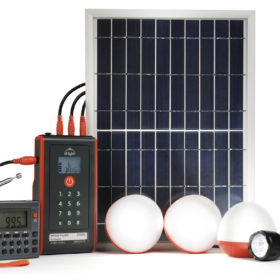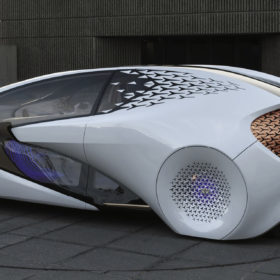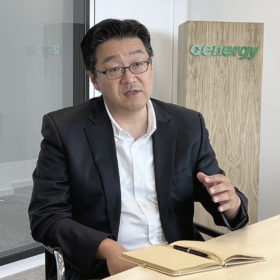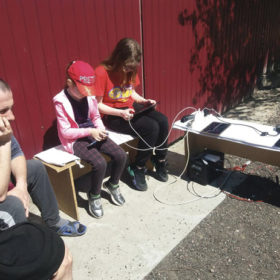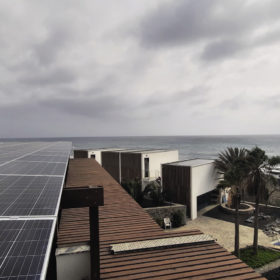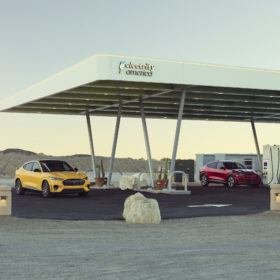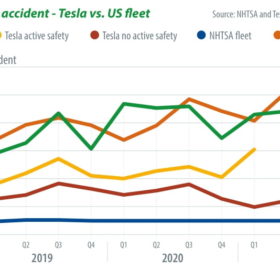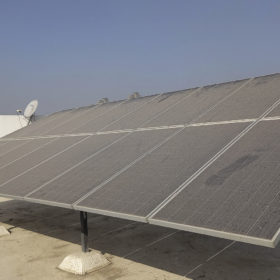Putting capital to work
Venture capital investment in solar and energy storage companies in sub-Saharan Africa brings with it considerable risk, but also holds the promise of making an outsized impact in delivering clean energy access. KawiSafi Ventures Managing Director Amar Inamdar says that venture capital investment in frontier markets will be a key part of the “capital stack” required to pursue the joint goals of leapfrogging fossil fuel energy development in the continent and lighting up African lives.
Solid opportunity
Hype and hope for solid-state batteries (SSBs) continues to grow as industries from automotive to storage bet big on the technology. Leading battery manufacturers and a roll call of start-ups are jostling to get from lab to fab. The reality of SSBs is in question though. As Marija Maisch reports, the window of opportunity for the decades-old technology to make the next big step toward commercialization is now.
Teamwork makes the green work
In May 2018, India’s Ministry of New and Renewable Energy adopted the National Wind-Solar Hybrid Policy. Though paltry when it comes to offering incentives or preferential treatment to solar-wind-hybrid (SWH) projects, the policy aims to enable more SWH projects to efficiently utilize transmission infrastructure and land, as well as reducing variability in renewable generation and thus improving grid stability.
Renewable solutions
South Korean industrial giant Hanwha launched its new Q Energy business over the summer, and is moving forward with an ambitious strategy of energy projects across the European continent. pv magazine caught up with Sang Chull Chung, CEO of Q Energy Group, for a look at its plans to accelerate deployment of renewables to alleviate Europe’s energy challenges.
Shining magnate
Mining magnate Andrew “Twiggy” Forrest is the founder and executive chair of Fortescue Metals Group, a major Australian iron ore producer. The company recently announced an ambitious $6.2 billion decarbonization strategy. Meanwhile, a fully owned subsidiary – Fortescue Future Industries – has rapidly become a global player in green hydrogen, along with a host of other technology pathways in the energy transition. Whether it is pushing to decarbonize mining, hashing out headline-making green energy deals, or using the popular “Rick and Morty” cartoon to educate people about the potential of green hydrogen, Fortescue and its shining magnate are talking the talk. But can they walk the walk? Blake Matich reports.
Solar aid in dark times
With Russia intent on destroying Ukraine’s energy infrastructure, a network of NGOs is taking up the challenge to donate small and mobile energy supply solutions. Astrid Schneider, a member of clean energy nonprofit Eurosolar, shares the story of the small solar kits that are making a big difference.
Liquid light
Once thought of in a niche sense, the solar-water nexus is a rapidly expanding network of applications. They include practical tools capable of solving persistent issues like water scarcity, as well as newly pressing issues like overcoming the water challenge of green hydrogen production. Blake Matich looks at such applications here in Australia and abroad.
Standards to unlock V2G
Mass adoption of electric vehicles presents opportunities for significant battery deployment to support our grid and power our homes. Developing and adopting standards for vehicle-to-grid bidirectional technology is needed to accelerate the path to these opportunities, reports pv magazine USA’s Tim Sylvia.
E+V = better vehicles
Electric vehicle batteries are packed with energy, with additional battery density and efficiency working to quell range anxiety for drivers. But with that capability lingers a concern from some that EVs may pose a fire risk and a challenge for first responders in the event of accidents. Professor Ray Wills from Future Smart Strategies bought his first EV in 2012 and argues that in terms of safety, EVs remain an easily superior vehicle, and even the tiny fire risk that exists is an ever-diminishing issue.
Avoiding PV performance killers
GIZ, Germany’s development agency, has partnered with India‘s Ministry of New and Renewable Energy to follow up on its successful “kW-to-kWh” study, which has become a quality benchmark for MNRE’s projects in India. PI Berlin acted as lead consultant on the project, and Asier Ukar, senior consultant and managing director of PI Berlin S.L., shares some of the key conclusions.
